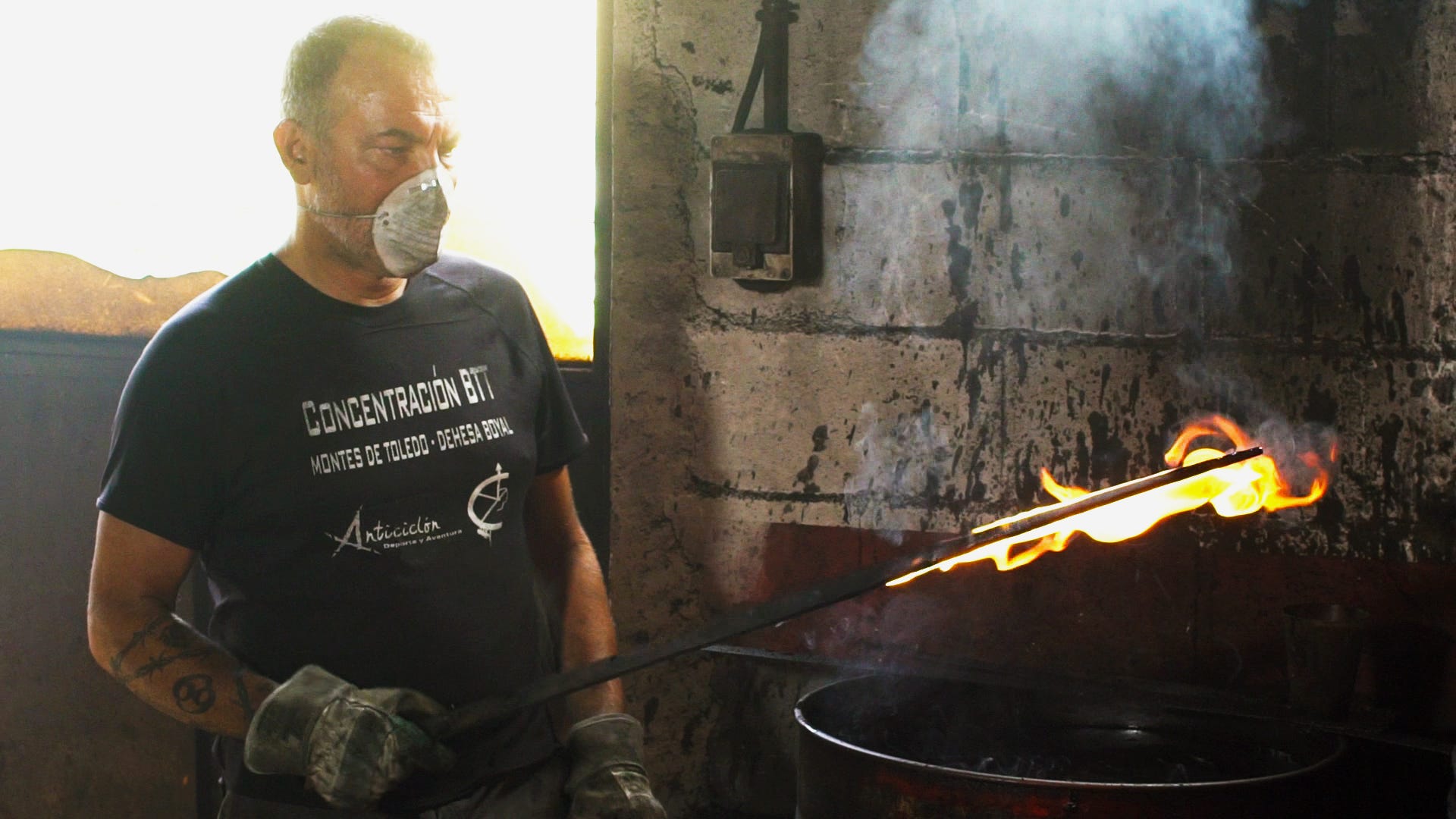
Fernando Teixeira for Business Insider Today
- Toledo, Spain, has been a hotbed for sword-making since the 5th century BC.
- But the art of sword-making is dying in Toledo, with just two artisans keeping the ancient tradition alive.
- Mass-produced swords from foreign competitors have made it difficult to stay in business.
- View more episodes of Business Insider Today on Facebook.
The swords forged in Toledo, Spain, were once considered the finest in the world.
Blacksmiths here have been making fine steel weapons by hand since the 5th century BC, furnishing armies throughout history.
But almost 40 years later, the art of sword making is dying in Toledo, and the city’s forges are in danger of shuttering for good.
“The future of sword making is like coal — dark,” sword-maker José Ramón Moreno told Business Insider Today. “If things don’t change, Toledo’s sword making will become a legend. There is no one to follow us nor is there much more business to continue. This is all going to disappear within a few years.”
Moreno learned the craft from his father when he was 16 years old. Back then, in the 1980s, there were a few hundred bladesmiths in Toledo.

Fernando Teixeira for Business Insider Today
Now, only Mariano Zamorano joins Moreno in trying to keep the tradition alive. They own the last two workshops in Toledo where swords are still made by hand.
"Right now, we are talking about a craft that is about to go extinct because there is no demand," Zamorano said.
In Moreno and Zamorano's workshops, the process begins in the furnace, where they heat a piece of steel to around 1,000 degrees Celsius. The metal is typically 60% to 80% carbon, and Moreno said master sword-makers can tell the quality of the steel by banging it against the anvil.
From there, the masters stretch and shape the metal to the right size and thickness, dunk the blade into a cask of oil, and put it back in the furnace at a lower temperature. They then hammer the blade, polish and refine the edges, and attach a hilt.
The time-intensive process dictates the steep prices for artisan swords.
"There are swords, for example, that take approximately 12 to 14 hours to manufacture," Zamorano said. "These swords sell for 200-something euros. Then there are swords that don't have straight blades, they have ornaments, the pommel is no longer round, so it takes between 16 and 17 hours. And the cost is 400."
But the coronavirus pandemic has struck a blow to their businesses. With tourism coming to a standstill during lockdown, the main market for their decorative swords disappeared. It's caused the 69-year-old Zamorano to consider retirement.

Fernando Teixeira for Business Insider Today
And better days may not be on the horizon, as few young people have shown interest in learning the craft of sword making.
Meanwhile, foreign competition is endangering the nature of the business. Mass-produced swords that come mainly from China can be found in Toledo shops for half the price or less of handmade ones.
"Nowadays everyone can make a sword," Moreno said. "Because you take a big, beautiful oven that indicates at so many degrees you have to heat, at so many degrees it has to cool down, and that is something anyone can do from a computer."
But to be able to make a sword just on instincts alone — by looking at the color of the steel, hearing how it sounds — takes talent.
"You have to know how to forge from whatever is given to you. This is the art of knowing how to forge."
